5 Questions for Ema Malyauka
who once threw away all of her art materials because, at the tender age of 24, she believed herself to be too old to make her artistic dreams come true.
Weekly trips to the bookshop made Ema Malyauka (35) fall in love with children’s book illustration at a young age. She also excelled at art class, but when it came time to choose a direction for her university degree, Ema’s mother dissuaded her from opting for art, because ‘you’ll never make money with that’.
To keep at least one foot in the field, Ema studied art education. But since it’s difficult to earn a living as a teacher in her native Belarus, she took jobs as a childminder, call centre assistant and sales manager until, at the age of 24, she decided that her artistic dreams were well and truly crushed and in order to not think about them anymore, she threw away all of her art materials.
Yet when the prospect of another office job left her in tears, her boyfriend suggested giving her dreams a second chance. Shortly afterwards, she found a job as a kindergarten art teacher and began drawing again in her spare time.
In 2015, Ema and her now-husband moved to the Netherlands. Speaking neither English nor Dutch and thus unable to work, Ema suddenly had a lot of time which she used to develop her illustration practice. She has since illustrated 11 books and has launched a Patreon where she shares all the information she wishes she had had access to when she set out on this career path. She also has a Domestika course about children’s book illustration that has thus far been taken by over 6,000 students.
1. New illustrators are always told to ‘find their style’. You have changed your style quite significantly several times and are also currently in the midst of a creative shift. How do you feel about this idea of finding your style …and sticking to it?
Oh, the quest for "style" in illustration has genuinely been a journey of both tears and chuckles for me! Over the years, I've constantly been on this exploration of finding my own style—and believe it or not, I've confidently thought I found it about 15 times. I've even shared a video [on my Patreon] about this ever-evolving journey, highlighting the various paths I’ve wandered down.
In the early years, I think my main misconception was equating style primarily with technique, such as how I apply texture, the way I shade, or even the specific way I illustrate eyes on my characters. I remember feeling a mix of frustration and confusion when reading articles or listening to advice from seasoned illustrators who simply said: "just draw, and your style will find you." Today, I nod in agreement with them. They were right.
The only thing I know is that the process of finding yourself can be accelerated with the right exercises.
It was only a year ago when I stopped actively searching for "my style." I realized that style isn't just about how we draw but, fundamentally, it's about understanding who we are as artists through our drawings. Techniques and materials? They're like the outfit that adorns our artistic expression. The underlying lines and how we portray characters, however, form the skeleton of our illustration. That's where the focus should be—on building a strong, foundational frame through persistent sketching and understanding our own artistic nature.

2. You have a Patreon where – among other things – you share your artistic experiments. In fact, you never seem to tire of playing around with new materials or trying out interesting ways of working with – or combining – materials you have. Why do you think it is important for artists to retain this playful and curious attitude?
Not everyone should feel they have to constantly try new things like I do. I know lots of illustrators who use the same materials for many years. This can also be a big part of an illustrator’s style. I just really like to try and learn everything! I like to mix all sorts of materials together and use them in different ways. For me, doing the same thing over and over, or having my art look too predictable, is maybe the worst thing. When I started, I only painted with watercolours for a long time because I thought that book illustrations should be only done in watercolours.
Now, I believe only in one thing: there are no rules. Some people might only want to use one material - like watercolour or acrylics. Others might like to keep trying new things. It’s super important to know what kind of illustrator you are and to listen to your own feelings.
3. You are the Queen of loose illustrations and also don’t shy away from ‘making a mess’. You have even set up the Instagram challenge #oh_my_mess for which you invite people to overcome their inner perfectionist and just have fun while creating. As a perfectionist, I can’t help but wonder – how do you do that?
Is perfectionism simply not something that’s part of who you are, or have you just found some really good ways of shutting up your inner perfectionist?
Yes, you hit the nail on the head. I used to have a really harsh critic inside of me, criticizing every move and every sketch. I saw that with such a critic inside, I couldn’t move forward, or grow in a way that was genuine and exciting for me. Simple doodles and loose illustrations are what inspire me the most. If you look at my old sketchbooks, you’ll see I tried to make every page, every picture perfect and beautiful— a picture I could post on Instagram and get a million likes (which, by the way, never happened).
But now, I believe progress comes quicker when you relax, not expecting results from one sketch, but from doing the exercise repeatedly for weeks and months. I even shared a video on my Patreon where I hold what I call “messy nights.” I spread out various materials, get my sketchbook ready, and spent two hours creating very unusual sketches.
4. You are a co-organiser of SketchBreakfast, have set up an Instagram account that champions children’s illustrators and have founded the very popular, annual #advent_challenge. What role does community play for you in this job that can, admittedly, be quite isolating?
I truly believe that making friends with other illustrators is vital. Working alone, we can sometimes repeat mistakes or struggle to find the right path, but when you meet up with friends, all sorts of topics get discussed. For me, personally, finding friends who were illustrators gave me one of the strongest boosts in understanding what to do and how to do it; having friends in the illustration field is a tremendous well of support and inspiration.
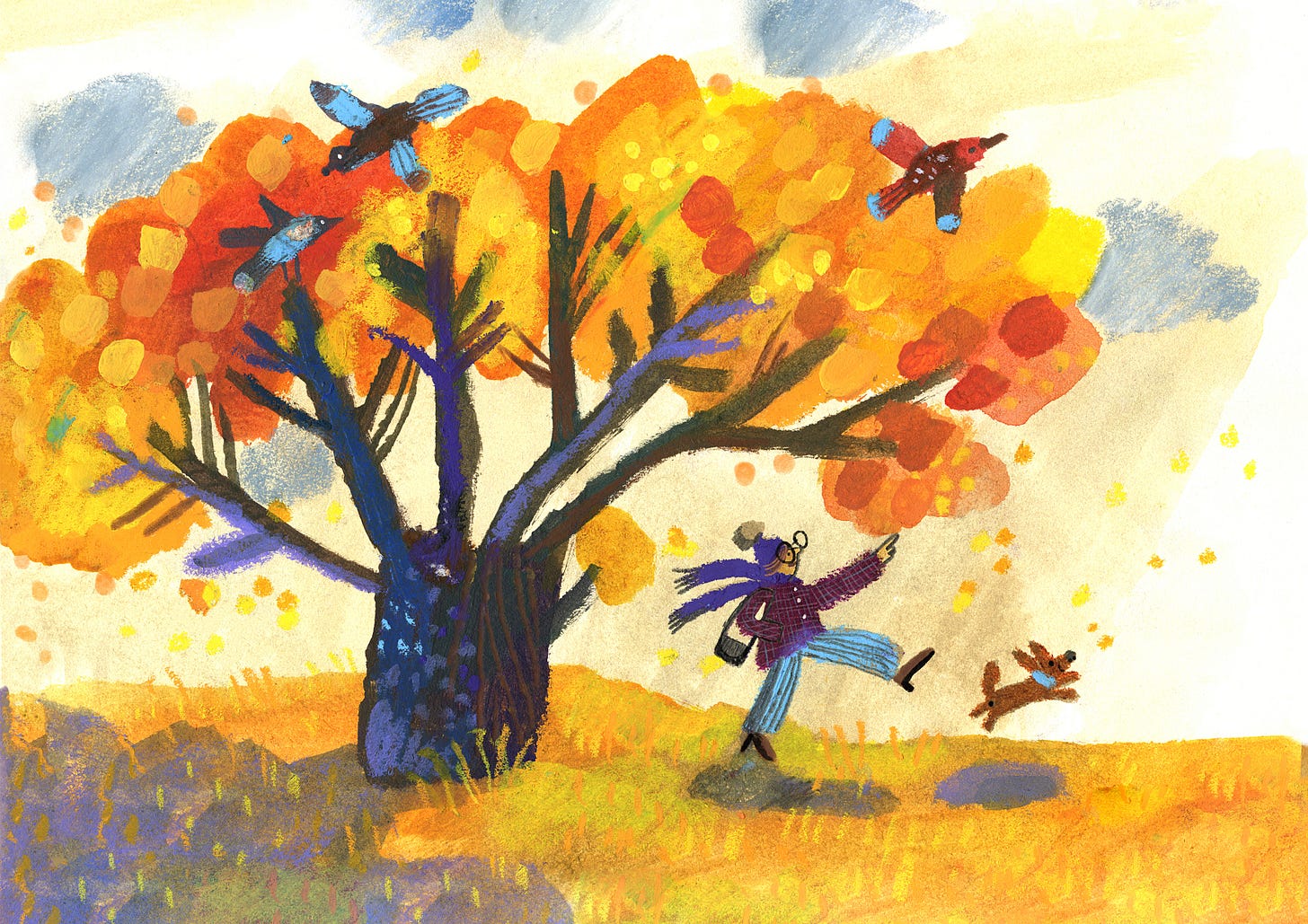
5. You are a self-taught illustrator and while building your career, you also moved to another country. When you arrived in the Netherlands 8 years ago, you didn’t speak any English.
Today you are a published illustrator with several books under your belt and you regularly record videos in English for your Patreon. What advice would you give to people who are afraid to start something because they feel the challenge is too great and they will never make it?
Recently, there's been a lot of talk about the concept of the 'comfort zone' and whether one should step out of it or stay within its boundaries while continuing to experiment and act.
For me personally, the ability to place myself in challenging situations likely stems from my childhood. Growing up without a father, and with a very gentle mother, I often had to stand up for myself.
Take, for instance, when I was invited to record a course for Domestika. While I was thrilled, upon arriving in Madrid, I was engulfed by fear. I wrote out every single word of my course, scripting each action and phrase—like: "Here I pick up the pencils and place them on the paper." My English was (and still is) quite basic. But through this challenging endeavour, I gained belief in my ability to speak on camera. Subsequently, I was able to start a Patreon. Gaining confidence from Patreon, I believed I could conduct workshops.
I think efforts and small victories like these build a kind of confidence. It operates like a domino effect: accomplishing one thing boosts your self-assurance, propelling you into your next endeavor, and creating something new. My advice is to start small.
Lastly, what is your spirit animal and why did you choose it?
My spirit animal is definitely the bee! I've always admired these little creatures for their ceaseless hard work and devotion. I can relate to them a lot since I, too, find myself constantly buzzing around from one task to another. But something I'm trying to embrace more recently, especially when I began doing more for other artists, is learning how to rest and pause amidst all the busyness. I adore the idea that all these years, I've been collecting nectar and now I get to transform it into honey for other artists. Hi-hi!
Connect with Ema
Instagram - instagram.com/ema_malyauka
Patreon - patreon.com/Ema_Malyauka
5 Questions for ... is an interview series created by me - Chantal Valerie - featuring creative self-starters, artistic late bloomers and those who have created a thriving career by following their passion.
Did you enjoy this interview? Feel free to share it!
A new instalment of 5 Questions for … publishes every second Tuesday.
Don’t want to miss one?

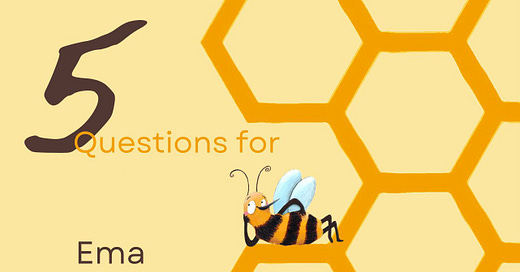



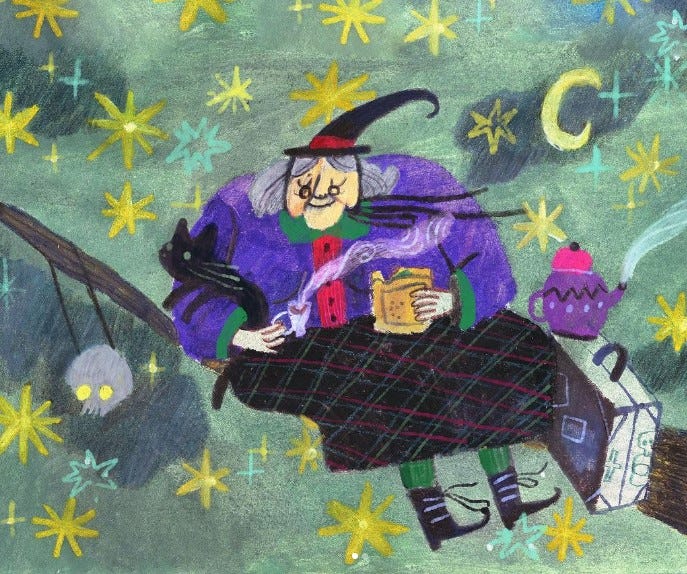
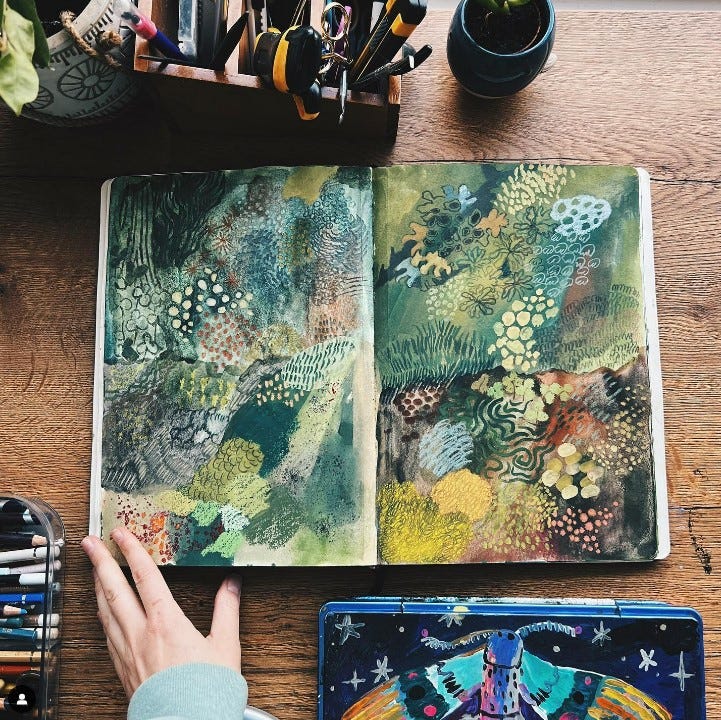
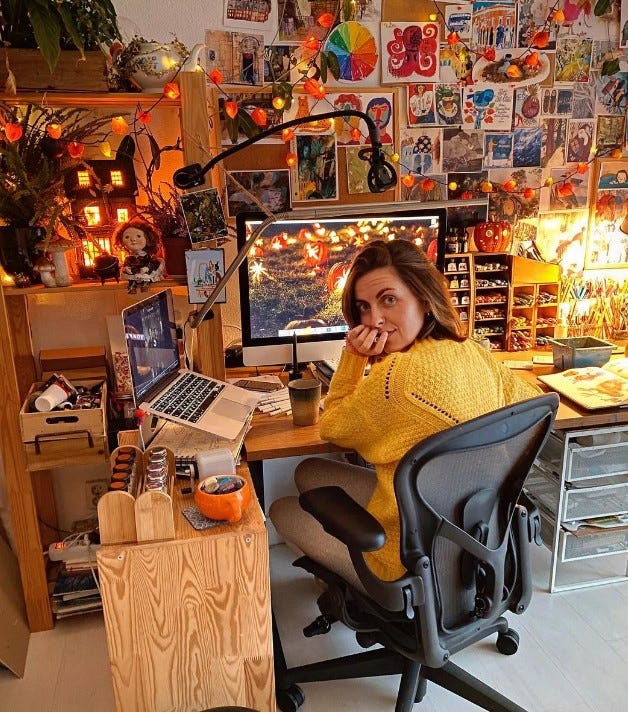
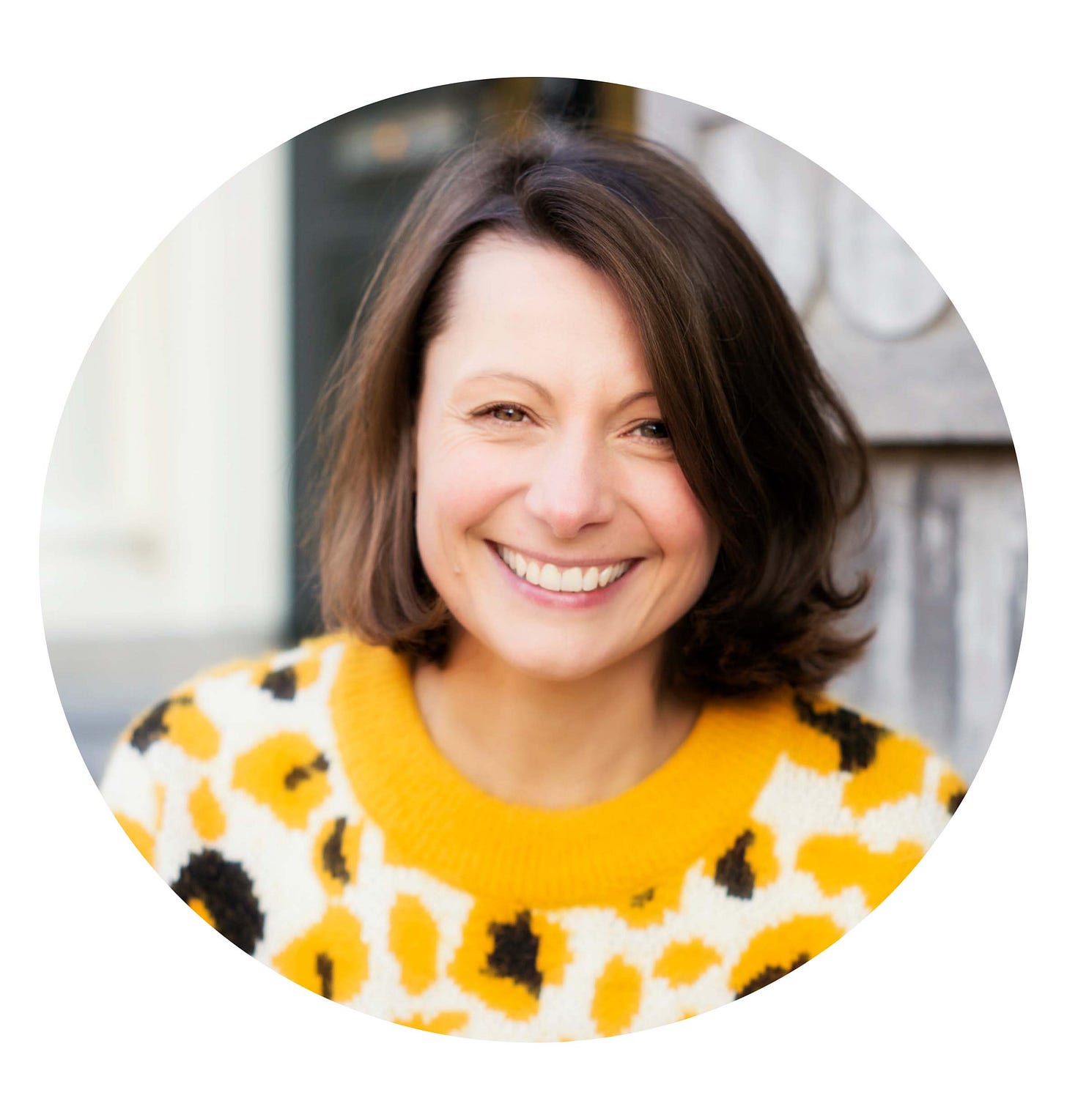
Great interview! Ema's work is so inspiring and I love the passion and honesty she passes when talking about art ❤️